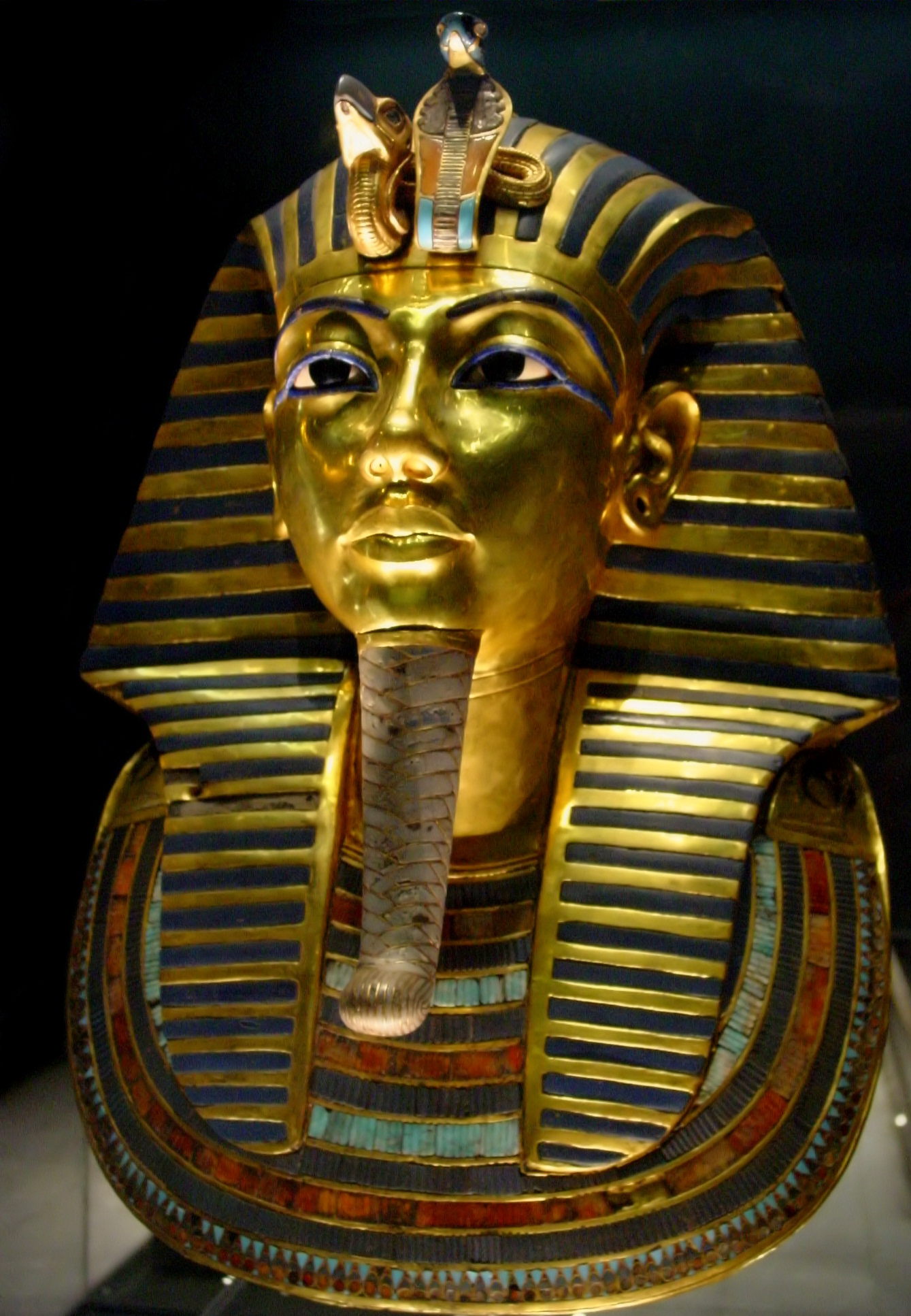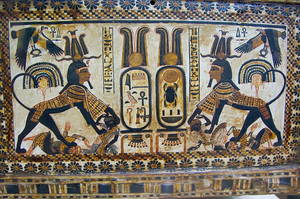This Week in Science History - Tutankhamun
Interview with
This Week in Science History saw on the 4th of November 1922 the first discovery of the entrance to the tomb of Tutankhamun. The discovery of the tomb in the Valley of the Kings in Egypt is one of the greatest archaeological finds of the 20th century, but science has also had a key role to play in reconstructing the life and death of the boy king.
 The discovery of the 4th of November was the top step of a flight of stairs that led down to the entrance to the tomb, now known as KV62. Howard Carter, who led the expedition to find the tomb, knocked through the door at the entrance on the 27th of November. He looked inside, and when asked what he could see, he replied 'Gold. Everywhere the glint of gold'. The tomb is the most complete ever to be discovered in the Valley of the Kings, with very little looting and damage by grave robbers. Over the next 8 years after the discovery, all of the items in Tutankhamun's tomb were catalogued and removed to the Egyptian Museum in Cairo.
The discovery of the 4th of November was the top step of a flight of stairs that led down to the entrance to the tomb, now known as KV62. Howard Carter, who led the expedition to find the tomb, knocked through the door at the entrance on the 27th of November. He looked inside, and when asked what he could see, he replied 'Gold. Everywhere the glint of gold'. The tomb is the most complete ever to be discovered in the Valley of the Kings, with very little looting and damage by grave robbers. Over the next 8 years after the discovery, all of the items in Tutankhamun's tomb were catalogued and removed to the Egyptian Museum in Cairo.
Until the discovery of the tomb, Tutankhamun had been considered to be a relatively minor figure in Egyptian history. There are conflicting theories for his parentage, but the most widely accepted, constructed from hieroglyphic inscriptions at the ruined city of Amarna, is that Tutankhamun was the son of the Pharaoh Akhenaten, and one of his lesser wives Kiya, not his most famous wife Nefertiti.
The first scientific examination of the boy King's body was an autopsy in 1926. This was followed by a series of X rays in 1968 and then a CT scan in 2005. The CT scans provided huge amounts of detailed information that have allowed researchers to figure out how old Tut was when he died and possibly what he died from.
CT stands for Computerised Tomography, a process that builds up a detailed 3D image of an object from 'slices' of images using X rays. All the 'slices' through the object are assembled using a computer program, which then allows internal structures to be viewed in 3D and in detail.
From the development of his skeleton, it is estimated that Tut stood at about 5 foot 6 and was about 19 years old when he died. The CT scans also helped to bust some myths about the boy king. Despite early suggestions that foul play may have been involved in his death, the CT scans showed no evidence for this. They disproved the theory that he was murdered with a blow to the head, and that the shadow on the X rays from the 60s that had led researchers to that conclusion were just due to the position of the skull during the X rays. They also showed that the curved spine that previous researchers had attributed to the condition scoliosis had occurred during the embalming process (as the vertebrae themselves were normally shaped).
 It is very hard to tell whether disease has played a role in the death of an Egyptian mummy. DNA testing has been refused by the Egyptian government, and it can be hard to determine what disease someone might have suffered from. Three thousand years ago, people could die from an infection from small cuts and grazes, and from fevers that are not fatal today, that might leave no lasting clues on the body.
It is very hard to tell whether disease has played a role in the death of an Egyptian mummy. DNA testing has been refused by the Egyptian government, and it can be hard to determine what disease someone might have suffered from. Three thousand years ago, people could die from an infection from small cuts and grazes, and from fevers that are not fatal today, that might leave no lasting clues on the body.
Several areas of research have provided evidence for how Tutankhamun died. The CT scans revealed that he had sustained a fracture above his left knee. Scientists from Italy and Switzerland confirmed that the fracture was not a result of the embalming process or later damage, but had occurred during Tutankhamun's life. The fracture had not healed - suggesting that it occurred in the few days before his death. Botany also played a role in unravelling the puzzle - the flowers on the garland around his neck only bloom in March and April, and given that the embalming process traditionally took 70 days, it suggests Tutankhamun died in December, the height of the hunting season. There were chariots and hunting implements like arrows and spears buried with the boy King, suggesting he was a keen hunter. It is now thought that he suffered a fall, perhaps from his moving chariot whilst hunting, and broke his leg. The leg became infected, possibly with gangrene, and Tutankhamun died a few days later.
Due to his young age when he became Pharaoh, Tutankhamun had advisers to make decisions on how his kingdom should be run. He may not have fought in battles, or brought lasting peace to the region during his short reign, but due to how complete his tomb was, and due to the use of modern scientific techniques to examine the body and artefacts, the discovery of Tutankhamun has given us a detailed view into the life of a Pharaoh nearly 3 and a half thousand years ago.
- Previous National Pathology Week
- Next Engineering Spider Glue










Comments
Add a comment